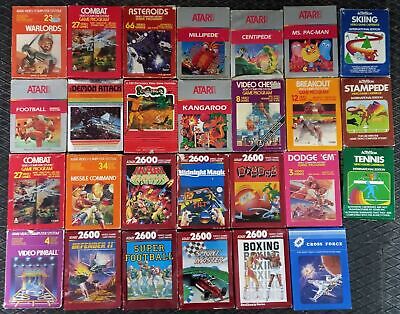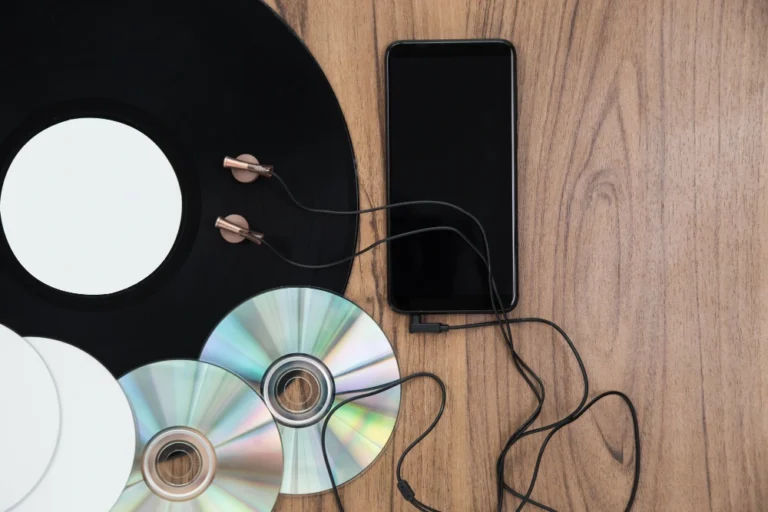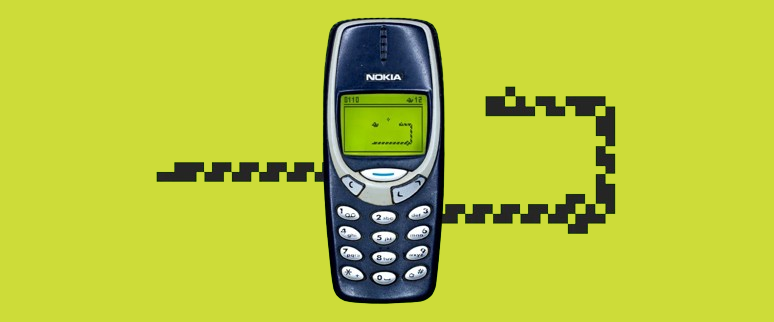
Remember the hypnotic rhythm? Arrow keys clicking, a line of black pixels growing steadily longer, the rising tension as space dwindled on that tiny, glowing green-or-grey screen. This was Snake – the simple, addictive game pre-loaded on millions of Nokia phones that became a global phenomenon in the late 90s and early 2000s. For many, the Nokia Snake game wasn’t just a mobile pastime—it was their first truly addictive mobile gaming experience.
Long before sophisticated smartphone apps with stunning graphics, Snake proved that mobile phones could be legitimate gaming devices [Google Search]. It transformed boring commutes, waiting room delays, and study breaks into high-score chasing adventures.
While not technically the very first game on a mobile phone, Snake’s widespread availability and perfect blend of simplicity and challenge cemented its place in history and paved the way for the multi-billion dollar mobile gaming industry we know today. Let’s delve into the origins of this pixelated serpent and explore how it captured the world’s thumbs.
The Dawn of Mobile Distraction: Before the Snake

While Nokia’s Snake brought mobile gaming to the masses, it wasn’t the absolute first. The seeds were planted a few years earlier:
- Siemens S1 (1994, Hidden): This early mobile phone reportedly contained a hidden version of Tetris called “Klotz,” developed by engineers but not officially promoted, possibly due to licensing concerns. A true hidden gem!
- IBM Simon Personal Communicator (1994): Often considered the first smartphone, the IBM Simon included a sliding tile puzzle game called “Scramble,” playable with a stylus on its touchscreen [Google Search].
- Hagenuk MT-2000 (1994): This Danish phone holds the distinction of being the first commercially available mobile phone with a pre-installed game: a version of the legendary Tetris [Google Search]. However, the phone itself wasn’t a huge success, and mobile gaming didn’t immediately take off [Google Search].
These early pioneers showed the potential, but lacked the reach and perhaps the perfect game formula to ignite a widespread trend. It would take a different company, and a different game concept, to truly kickstart the mobile gaming revolution.
The Evolution of Snake: From Arcade to Pocket
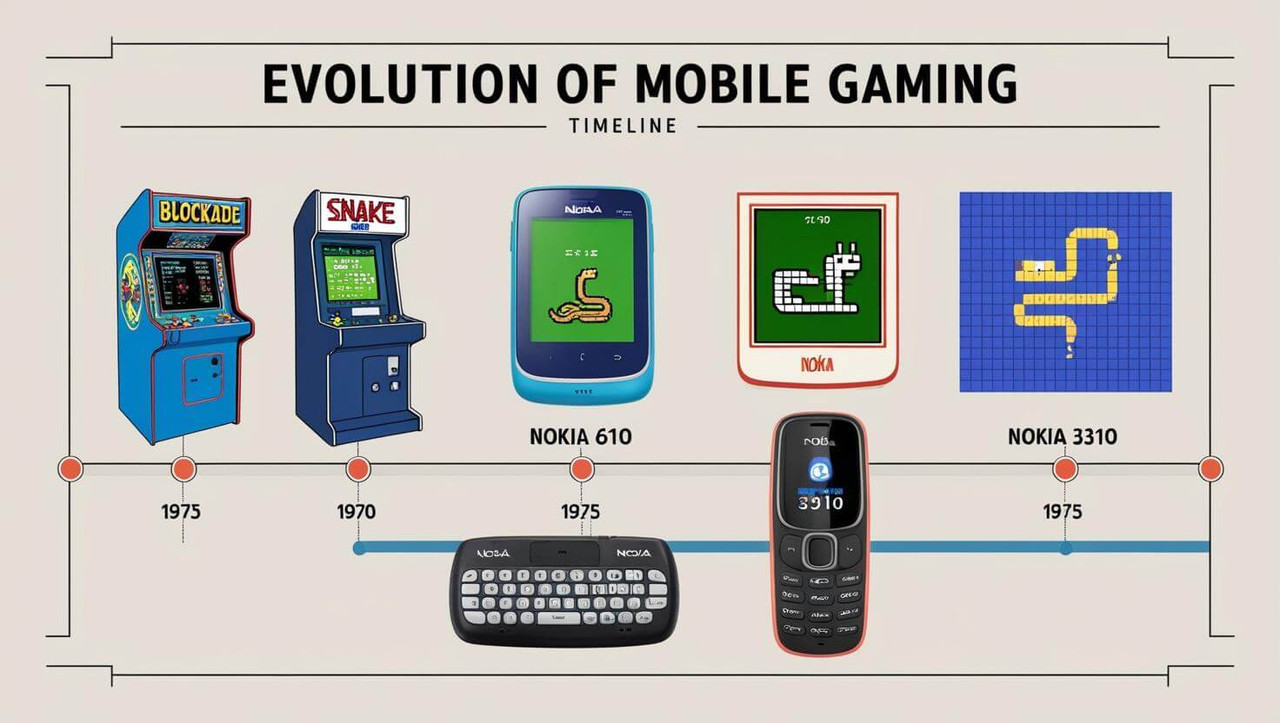
The core concept of Snake predates Nokia by decades.
- Blockade (1976): The genre originated with this two-player arcade game by Gremlin Industries, where players steered growing lines trying to force their opponent to crash [Google Search]. Many clones followed, like Atari’s Surround (1977) for the Atari VCS console [Google Search].
- Early Home Computer Versions (Late 70s/80s): Single-player versions emerged on early home computers like the TRS-80 (“Worm,” 1978), Apple II, PET, and BBC Micro (“Snake,” 1982) [Google Search]. These established the familiar eat-and-grow mechanic.
- Nokia Enters the Game (1997): Nokia’s marketing team wanted more engaging applications for their upcoming phones [Google Search]. Tasked with creating a game for the Nokia 6110, designer Taneli Armanto, recalling earlier computer snake games, adapted the concept [Google Search]. He initially considered Tetris but faced rights issues [Google Search].
- Snake on Nokia 6110 (1998): Snake launched on the Nokia 6110, one of the first phones with the game pre-installed. It utilized the phone’s infrared port for a two-player mode [Google Search].
- Snake II on Nokia 3310 (2000): The legendary Nokia 3310 included Snake II, refining the gameplay and exposing it to an even wider audience thanks to the phone’s immense popularity.
- Later Versions: Nokia continued to include updated versions (Snake Xenzia, 3D Snakes) on subsequent feature phones and smartphones [Google Search]. Gameloft even developed modern versions for HMD Global’s Nokia revivals.
Armanto’s genius lay in creating a version perfectly suited for the mobile phone’s limitations: simple controls using the numeric keypad, clear gameplay on a low-resolution monochrome screen, and addictive mechanics that fit short bursts of play.
“Technical” Specs: Mobile Gaming Then and Now

Comparing Nokia Snake to modern mobile games highlights the incredible technological leap.
| Feature | Nokia Snake (Late 90s/Early 00s) | Modern Mobile Game (e.g., Call of Duty Mobile) |
| Device | Feature Phone (Nokia 6110/3310 etc.) | Smartphone / Tablet |
| Display | Monochrome LCD (Low Resolution) | High-Res Color OLED/LCD (Touchscreen) |
| Input | Numeric Keypad (2, 4, 6, 8 keys) | Touchscreen (Gestures, Virtual Joysticks) |
| Graphics | Simple 2D Pixels (Line/Dots) | Complex 3D Models, Textures, Effects |
| Sound | Monophonic Beeps/Tones | Stereo Audio, Voice Chat, Soundtracks |
| Game Size | Kilobytes (Tiny) | Gigabytes (Requires Significant Storage) |
| Connectivity | Offline (Some early IR multiplayer) | Primarily Online (Multiplayer, Updates) |
| Distribution | Pre-installed on Device | Downloaded via App Store |
| Monetization | Included with Phone | Free-to-Play with In-App Purchases, Ads, Subs. |
| Complexity | Very Simple (One core mechanic) | Very Complex (Multiple modes, systems, meta) |
Export to Sheets
Snake thrived because of its simplicity, perfectly matching the hardware constraints of its era. Modern games leverage vastly more powerful hardware for immersive, complex experiences, but often lose that pick-up-and-play immediacy.
Cultural Impact: The Birth of the Mobile Gamer
Snake’s impact extended far beyond just being a game; it changed our relationship with mobile phones.
- Making Phones Fun: Before Snake, phones were primarily communication tools. Snake demonstrated their potential as entertainment devices, filling idle moments [Google Search].
- The Killer App: For many, Snake was a key reason to own a Nokia phone. It became a major selling point and a defining feature of the brand.
- Social Phenomenon: Comparing high scores became a playground and office obsession. The simplicity meant anyone could play and compete. Finland even held official Snake championships [Google Search].
- Gateway to Gaming: Snake introduced millions of people, who might not have owned consoles or PCs, to the joy (and addiction) of video gaming.
- Paving the Way: Its massive success (estimated 400 million+ installs by Nokia) proved the viability of mobile gaming, encouraging further development, from early WAP and Java games to the sophisticated titles we see today [Google Search].
- Pop Culture Icon: Snake, alongside the indestructible Nokia 3310, became a symbol of late 90s/early 00s nostalgia, frequently referenced in memes and retro discussions.
Snake wasn’t just a game; it was a cultural touchstone that normalized playing games on the go, fundamentally altering the purpose and perception of the mobile phone.
Collector’s Corner: Chasing the Indestructible
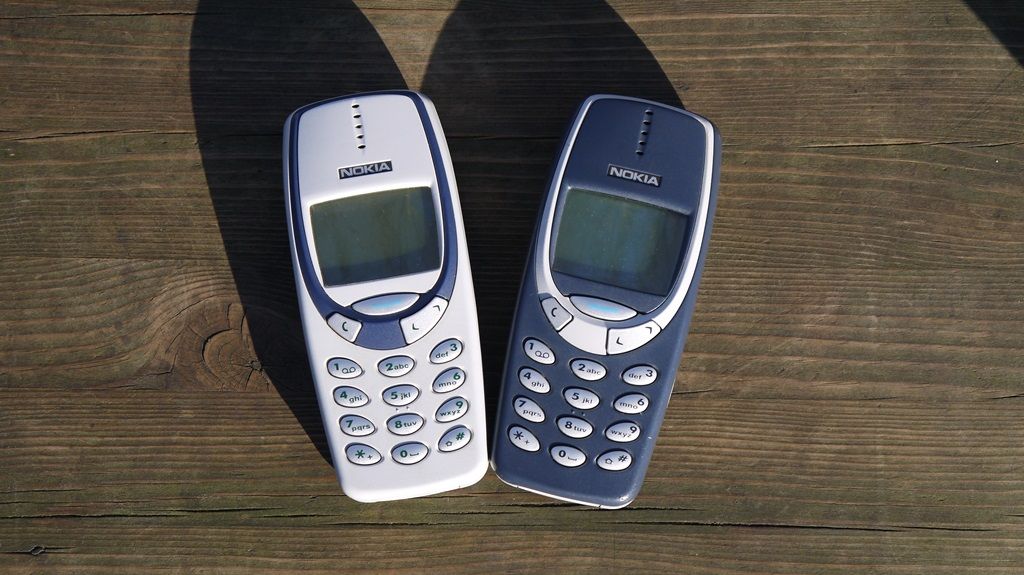
Nokia phones from the Snake era, especially the iconic 3310, are popular items for retro tech collectors.
- Desirable Models: The Nokia 6110 (first phone with Snake), the ubiquitous Nokia 3310 (and its variants like 3315, 3330), and other models known for Snake (like the 3210) are sought after.
- Condition & Functionality: Working condition, battery life (original batteries may be degraded), and cosmetic appearance are key. Original chargers and boxes add significant value.
- Value: Prices vary. Common models like the 3310 can often be found for under $50-$70 used, but mint condition, boxed examples, or rarer color variants can command higher prices, sometimes up to $300 or more on platforms like eBay [Google Search].
- Memorabilia: Beyond the phones themselves, related items like framed disassembled phone art featuring the 3310 are also available [Google Search].
- Usability: While collectible, remember these phones run on older 2G networks, which are being phased out globally. Their practical use as daily phones is limited, making them primarily nostalgic display pieces or offline gaming devices.
Collecting these Nokia “bricks” is a tribute to an era of simpler, incredibly durable mobile technology and the game that defined it.
Why We Miss the Simple Serpent
In a world of hyper-realistic, complex mobile games demanding constant attention and often, money, why do we look back so fondly on Snake?
- Pure Simplicity: Snake had one goal, simple rules, and intuitive controls. There were no tutorials, no complex menus, no in-app purchases – just pure gameplay.
- Accessibility: It came with the phone. Everyone had it, creating a shared experience and level playing field for competition.
- Skill-Based Challenge: Success depended purely on reflexes and planning. Getting a high score felt like a genuine achievement.
- Offline Play: No internet connection required. It was perfect for killing time anywhere, anytime.
- Low Stakes Fun: It was engaging without being all-consuming. You could play for two minutes or twenty.
- Nostalgia: For many, Snake is inextricably linked to their first mobile phone and memories of a simpler technological time. It represents a period before constant connectivity and app overload.
We don’t miss the tiny monochrome screen or the clunky keypad controls, perhaps, but we miss the straightforward, universally accessible, purely skill-based fun that Snake represented.
Game Over? Snake’s Enduring Legacy
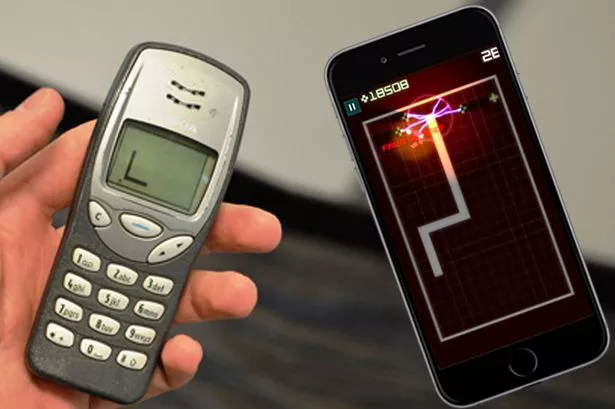
Nokia’s Snake may seem primitive compared to modern mobile games, but its influence is undeniable. It wasn’t just a game; it was a proof-of-concept that transformed the mobile phone from a simple communication device into a pocket-sized entertainment center [Google Search]. It fostered a generation of mobile gamers and demonstrated the massive market potential that companies like Apple and Google would later capitalize on with their app stores.
The simplicity that made Snake a hit on constrained hardware is a design lesson that still resonates. While technology has evolved exponentially, the core appeal of an elegant, easy-to-learn, difficult-to-master game remains. Snake didn’t just help launch mobile gaming; it showed how a simple idea, perfectly executed for its platform, could capture the imagination of millions [Google Search]. And somewhere, right now, someone is probably still trying to beat their old high score.


